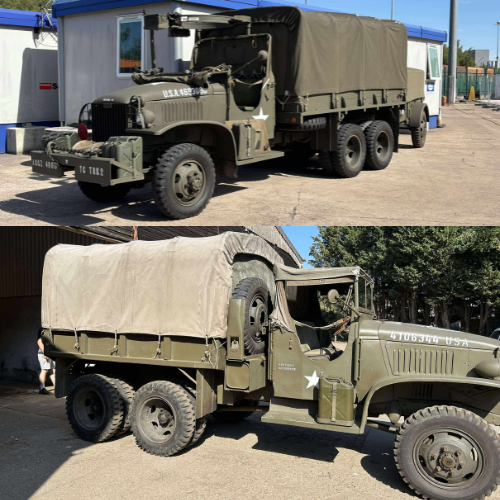GMC CCKW 352 & 353 “Deuce and a Half” (1941–1945)

The GMC CCKW 2½-ton 6×6 truck, affectionately nicknamed the “Jimmy” or “Deuce and a Half,” was the logistical backbone of Allied operations during the Second World War. Designed by Yellow Truck and Coach Co., a division of General Motors, the CCKW was produced from 1941 to 1945, with over 572,000 units built across multiple variants.
At its core, the CCKW was a medium-duty, all-wheel-drive cargo truck, powered by the GMC 270 cubic inch inline-six petrol engine, delivering around 91–104 horsepower. It featured a 5-speed gearbox, 2-range transfer case, and beam axles on leaf springs, giving it formidable off-road capability. The truck’s versatility made it indispensable for troop transport, supply runs, artillery towing, and mobile workshops.
The two principal variants were:
- CCKW-352: The short wheelbase (SWB) version, measuring approximately 145 inches between axles. It was primarily used as a prime mover, ideal for towing artillery such as 75mm pack howitzers and 105mm field guns. Its compact frame offered better manoeuvrability in confined or rugged terrain. The 352 can be identified by having the spare wheels behind the cab.
- CCKW-353: The long wheelbase (LWB) variant, with a wheelbase of 164 inches, was the standard general-purpose cargo truck. It formed the bulk of production—over 464,000 units—and was the workhorse of the Red Ball Express, the famed supply chain that sustained Allied forces after the Normandy breakout.
Both models came in open or closed cab configurations, with optional front-mounted winches and machine gun rings above the co-driver’s seat. Though unarmed by default, around 25% were fitted with a .50 calibre Browning M2 or .30 calibre M1919 for convoy defence.
Post-war, the CCKW remained in service through the Korean War, Vietnam, and with NATO allies well into the 1950s. Its rugged design, modularity, and sheer production volume made it one of the most iconic military trucks of the 20th century.
)
)
)
)
)

)
)